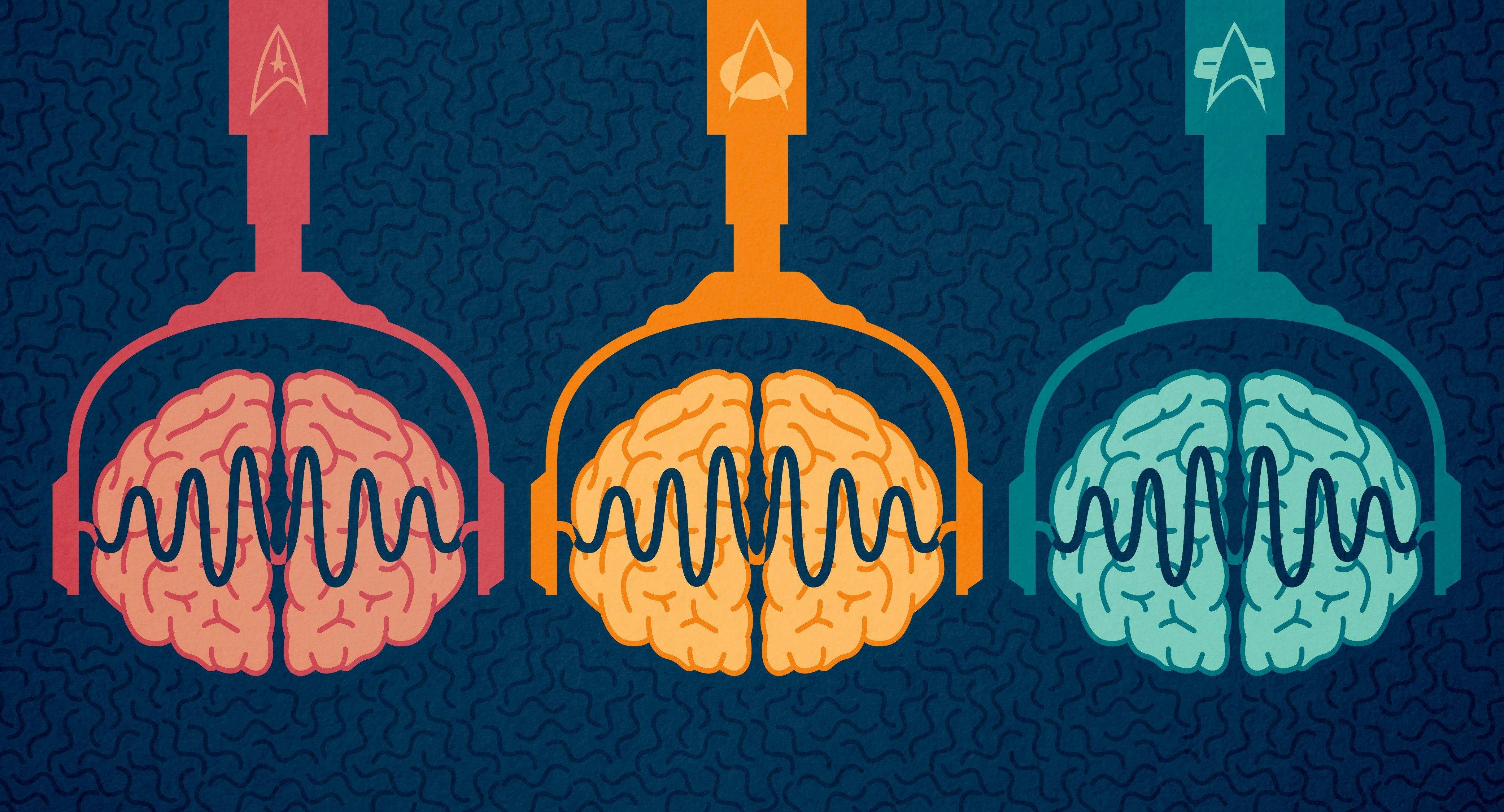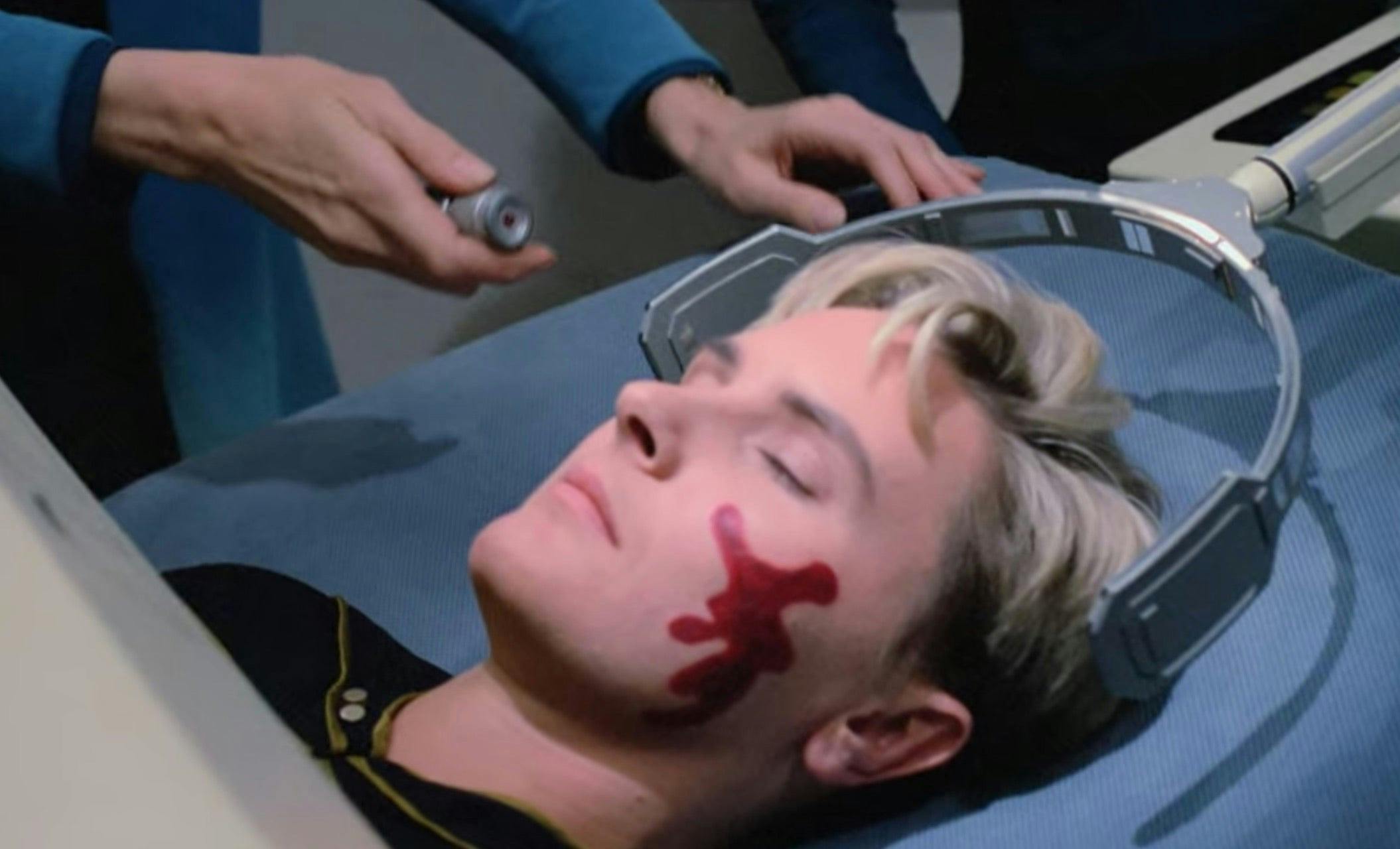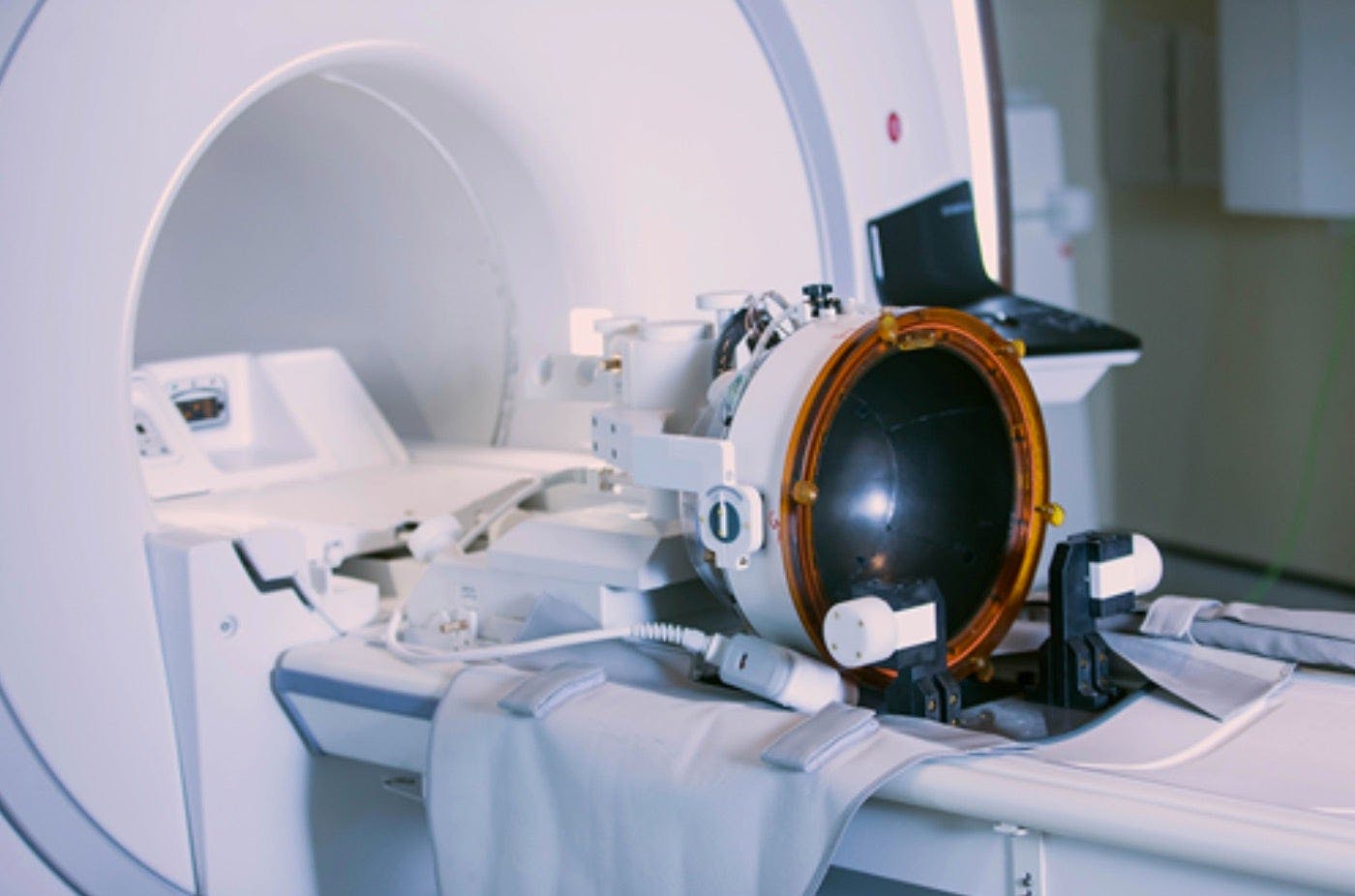Published Dec 8, 2020
Star Trek's Neural Stimulator May Soon Be a Reality
Life imitates Star Trek's science as medical technology continues to develop.

StarTrek.com
With their characteristic prescience, the writers of Star Trek imagined a futuristic device — at times called a “neural stimulator,” and others a “cortical stimulator” — that can non-invasively kickstart brain function and help patients regain consciousness. Voyager’s holographic Doctor uses one in an attempt to revive Tom Paris after a shuttlecraft accident, and Dr. Crusher uses one to try to revive Lieutenant Tasha Yar.
Such a device already exists, and has in fact been around for more than a century.
It’s an ultrasound transducer.
Ultrasound transducers, which convert electricity into ultra-fast sound waves (i.e., “ultrasound”), are already utilized in a wide variety of FDA-cleared procedures, from medical imaging, to ablating prostate tumors, to tightening aging skin.
But we’ve known for decades now that ultrasound can also be used to electrically stimulate neurons. The earliest evidence for this was in the 1920s, when researchers showed that ultrasound could electrically excite nerves running through isolated muscle tissue. Evidence for the stimulatory effect of ultrasound waves on neurons continued to accumulate over the ensuing decades; and, in 2014, scientists showed that ultrasound waves can bypass the skull and (safely) stimulate highly specific targets inside the brains of awake humans.
Excitingly, this sort of non-invasive brain stimulation may soon be used to help restore consciousness to brain-damaged patients, just as the writers of Star Trek predicted. What’s more, the show’s writers even got the anatomy involved in such a treatment right. Almost.
In The Next Generation episode, “Skin of Evil,” Dr. Crusher instructs her assistants to go for “direct reticular stimulation” to try to revive Lieutenant Tasha Yar’s consciousness. By “reticular stimulation,” the show’s writers were probably referring to electric stimulation of the reticular formation, which is a cluster of regions inside of our brainstem that act as a sort of “on and off switch” for consciousness. For this reason, this cluster of brain regions is also called the reticular activating system, because it’s thought to “activate” much of the rest of the brain during conscious states.

StarTrek.com
While I don’t know of any real life patients undergoing direct reticular stimulation to regain consciousness, the writers of Star Trek were right to think that the reticular activating system would be a reasonable target for such a treatment. In fact, my colleagues who are today searching for just such a consciousness-restoring treatment are honing in on a part of the brain called the central thalamus, which is one of the main targets of our reticular activating system (and which is therefore also involved in “activating” much of the rest of the brain during conscious states).
There’s already evidence from both human and non-human animal studies that electric stimulation of the central thalamus might help patients regain consciousness. But, that evidence has been difficult to translate into medical treatments, because the central thalamus is located deep inside of our brain, which means that stimulating it has historically required intensive brain surgery.
But that’s changing with the advent of ultrasound neural stimulators. Because ultrasound waves can be focused onto precise targets deep inside of our brain, they can be used to non-invasively stimulate the central thalamus. In fact, already in 2016, my colleagues at UCLA published a report of one comatose man safely regaining consciousness after receiving ultrasound stimulation to his central thalamus.

In-Sightec Inc
We don’t know yet if this patient regained consciousness because of his ultrasound treatment, or if he would’ve regained consciousness anyway, since that 2016 report was just a preliminary feasibility and safety study in this one patient. But, with more experiments currently underway, we’ll soon know whether ultrasound stimulation to the central thalamus can actually help patients regain consciousness.
If it can, then the futuristic treatment imagined by Star Trek — in which doctors kickstart consciousness using a non-invasive neural stimulator — may soon be a reality.

